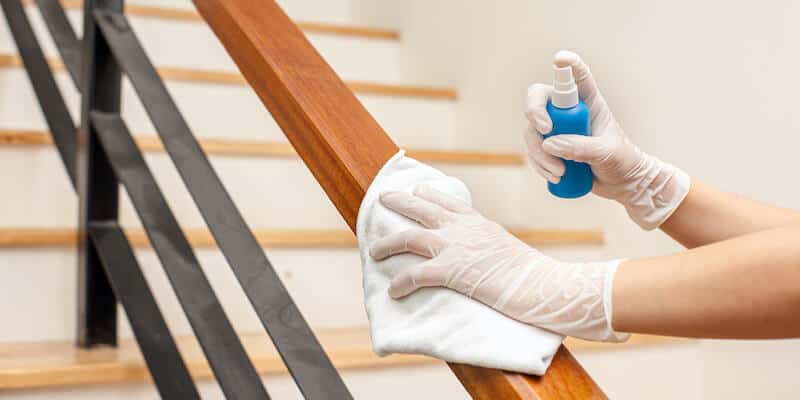Are you the proud new owner of a fireplace, or do you already have one that’s been burning for years? If so, you may have recently noticed that your chimney isn’t doing its job quite how it used to – smoke from your fire stunts at the top and refuses to rise up and out, no matter how long you wait for the updraft. If this sounds familiar, fret not! We’re here to guide you on how to fix a chimney that’s not drawing smoke up. Whether you have a log burner without a chimney or a traditional fireplace, this guide will help you troubleshoot the issue. Ready to start the process? Let’s get to it used to – smoke from your fire stunts at the top and refuses to rise up and out, no matter how long you wait for the updraft. If this sounds familiar, fret not! We’re here to guide you on how to fix a chimney that’s not drawing smoke up. Ready start the process? Let’s get to it!
- Reasons Why Your Chimney Isn't Drawing Smoke Up (Even with Gas Fireplaces
- Check for Blockages
- Ensure Proper Air Combustion
- Chimney Liner and Vents for Electric Fireplaces
- Important Chimney Maintenance (Including Electric Fire Installation
- Remedies for Poor Drawing Conditions
- Responses to Frequently Asked Questions with Explanations
- References
There are several potential causes for a chimney not drawing smoke up. These include blockages due to debris, a low stack temperature, or restricted air flow. It is best to contact a professional chimney sweep to properly diagnose the issue and provide a solution.
“Many factors can affect chimney draw, from design issues to obstructions or the condition of the flue. As a Certified Chimney Professional, my advice to improve your chimney’s draw would be first to ensure a professional inspection of the flue. In many cases, a thorough cleaning and the removal of any blockages may vastly improve the chimney’s efficiency. Remember, a well-maintained chimney is key to a smoke-free home.”
Harold Whitman, Certified Chimney Professional
Reasons Why Your Chimney Isn’t Drawing Smoke Up (Even with Gas Fireplaces
One of the major reasons why your chimney might not be drawing smoke up is that there is a blockage. Blockages in the chimney can come from a variety of sources, such as built-up creosote, an animal’s nest, or debris. This blockage will prevent the smoke from rising properly as it is unable to escape through the top of the chimney.
Another cause of poor chimney performance could be a draft issue. If the air pressure inside your home is stronger than outside, it could create a reverse flow within your chimney and cause smoke to back up into your home rather than draw it out. If this is occurring, you may need to check for sources of incoming air such as holes in walls or windows that are allowing too much positive pressure into your home.
On the other hand, there are some instances where the damper–the door that closes off and opens the throat at the bottom of your chimney flue–is left open after use. This creates an escape route for heat and any additional smoke produced by your fire, so if this damper isn’t closed tightly shut after use then the smoke won’t draw properly through your chimney.
Finally, another potential cause of inadequate performance could be related to the amount of firewood being burned. Burning wet or green wood may produce more dense smoke than seasoned wood due to its high moisture content, which can build up quickly and reduce airflow within your chimney opening.
Each of these scenarios can cause issues with smoke forming in your home rather than escaping through the chimney properly–now that you’re aware of potential problems, it’s time to move on to checking and preparing your firewood prior to getting started with a fire.

- One of the most frequent causes of a chimney not drawing smoke is its insufficient height.
- Obstructions in the flue, such as nests from birds or animals, can also impede proper ventilation and cause the smoke to be trapped in the chimney.
- In some cases, too weak of a fire can be unable to generate enough heat for the air inside the flue to rise and push the smoke out of the chimney.
Check the Firewood
When troubleshooting a chimney that’s not drawing smoke up, one of the first things to inspect is the firewood. Firewood needs to be dry and well-aged in order to burn efficiently and produce sufficient heat. If the firewood is wet, has infestations or mold, or is too young and has green characteristics such as sap, it won’t ignite properly and can cause clogged chimneys.
On the other hand, using excessively large pieces of wood, sometimes referred to as “logs”, can also cause an inefficient draw. Logs are not recommended for indoor fires due to their low heat content and long burning time. If logs are used excessively, the air can become stale with too much unburned smoke which will prevent a proper draft from occurring.
To ensure adequate airflow in a fireplace, only use seasoned hardwoods such as oak, ash, birch, cherry or hickory in split form and make sure it is stacked loosely with plenty of oxygen for air circulation between each log.
A clean burning fire will result in more efficient draws and less build-up of creosote in the flue. To conclude, make sure your firewood is dry and well-aged before venturing into the flue to inspect it. In the next section we’ll discuss how to inspect the flue properly to ensure a good draw.
Inspect the Flue
In order to ensure that your chimney is drawing smoke up and away from the living space of the home, inspecting the flue is an essential first step. It is important to perform a visual inspection to see if there are any signs of damage. It may be helpful to use a flashlight and/or a mirror to get a better view of the flue lining. Check for cracks, separations, or breaks in the mortar joints that make up the liner. Also check the metal parts for rust or corrosion.
If any damages are found, it will be necessary to have the flue repaired before proceeding with attempting to fix the chimney draft. This repair may involve replacing certain sections of metal flue liner or completely relining with a new material such as clay tiles or stainless steel liners. It is important to note that whatever option is chosen must pass code standards for safety reasons.
Despite being necessary for safety reasons, some homeowners may find that repairing or relining the flue is too expensive or complicated. While repairs are not always necessary, ignoring the issue can cause dangerous levels of carbon monoxide to enter a home and should never be taken lightly. Ultimately it is up to the homeowner to decide whether they want to take on these costly repairs but they should still periodically inspect their flue afterwards even if they choose not to repair it right away.
Now that we’ve discussed how best to inspect a chimney’s flue and what repairs are necessary if any, let’s move onto checking for blockages in our next section.
Most Important Highlights
An inspection of the home’s flue is necessary to ensure the chimney is working properly, and if damages are found they may need to be repaired or relined. This repair can be costly, and while it is important for safety reasons it is up to the homeowner to decide whether or not they want to take on these repairs. Homeowners should also periodically inspect their flue even if they choose not to repair it right away.

Check for Blockages
One of the most common reasons why a chimney is not drawing smoke up is that the chimney is blocked in some way. Before attempting any major fixes, it’s important to first make sure that there aren’t any blockages inside the chimney. If there are blockages, then this could easily be the only issue and resolving them will solve the problem quickly and easily.
An obstruction can occur when birds or animals build nests in the flue or if debris such as leaves has built up through regular debris falling into the chimney throughout the year. To check for blockages, take a flashlight and visually inspect the interior of your flue. If you are unable to do this yourself, then you may need to call a professional to perform an inspection of your chimney.
On the other hand, some may argue that inspecting the inside of your flue isn’t necessary because if there were an obstruction, then it would likely be visible from outside of your home. This can certainly be true in some cases, but more often than not it’s best to actually inspect the interior since obstructions can sometimes occur further down than what is visible from outside of your home.
If there are any blockages found in your chimney, they should be removed before attempting any other possible solutions. Once removed, if issue continues then it’s safe to assume something else is at play here. Now let’s move on to discuss how a damper blockage could also be an issue causing smoke not to enter your chimney correctly.
Damper Blockage
Inspecting and diagnosing a chimney that is not drawing smoke up can be a tricky endeavor, as there are many factors to consider when addressing this issue. One of the more common causes of a malfunctioning chimney is damper blockage. The damper is an adjustable metal frame in the throat of the chimney that is used to control airflow in and out of the flue. When the damper becomes blocked or stuck, fresh air cannot enter the system to allow for proper oxygen combustion, leading to smoky conditions inside and around the home.
An experienced Chimney Sweep will be able to inspect the damper and determine if it is causing an obstruction. If a blockage is present, they will manually clear it to ensure that it is free from debris. There are also specialty tools that can be deployed to break up obstructions from within the system which can achieve similar results. Additionally, installing an automated damper system may help prevent blockages from occurring in the future by allowing for complete control over airflow into and out of the chimney without constant manual intervention.
While both manual and automated solutions have their merits, ultimately the choice comes down to personal preference and a careful assessment of cost versus benefit. Whichever approach you take when addressing a blocked or stuck damper, be sure to utilize experienced professionals in order to guarantee safety and success.
Now that we’ve addressed how to tackle damper blockage, let’s discuss ensuring proper air combustion for optimal draw in our next section.
Ensure Proper Air Combustion
Ensuring proper air combustion is essential when fixing a chimney that is not drawing smoke. Without the correct combustion of air, the wood or other material being burned may start to smolder and even fail to burn at all. This means that any smoke created will not be able to escape the chimney as efficiently, resulting in a smoky or stale atmosphere in your home.
There are two main ways to ensure proper air combustion: ensuring you have enough airflow and ensuring that the fire’s materials have enough oxygen to combust.
When it comes to airflow, it is important to be sure that the area surrounding the stove or fireplace is free of obstructions. This includes furniture, drapery and anything else that could limit the flow of air around the firebox. Additionally, it is recommended to open a window or door in order to create an air exchange in whichever space contains your stove or fireplace, creating more efficient airflow.
When it comes to oxygen levels, it is important to ensure there is enough oxygen around the burning materials inside the firebox. This can be done by making sure that you are using dry, seasoned (aged) wood as opposed to green wood which has too much sap and moisture and therefore limits oxygen flow. Additionally, controlling how long the combustion process lasts and adjusting the flame levels helps promote a cleaner burning.
The goal of proper air combustion when dealing with a chimney that’s not drawing smoke up should always be for complete combustibility with minimal odor and smoke – this way you can avoid any potential damage from occurring due to improper air combustion or an unproductive burn. In order for this goal to be achieved, following these tips, as well as consulting with a professional chimney operator can help prevent larger problems from developing.
Now that we understand how important proper air combustion is when attempting to fix a chimney not drawing smoke up, let’s move on to discussing what proper draft levels are needed for successful smoke evacuation.
Proper Draft Levels
When a chimney is not drawing smoke up and out properly, the first step is to check the draft levels. The draft levels of the chimney should be approximately 0.01 inches water column (WC) when at steady state. If the levels are higher or lower than this then the chimney needs adjusting as many issues can arise from too little and too much pressure.
If there is an insufficient pressure level in the chimney then two major problems can follow. First, smoke will fill your home instead of exiting through the chimney. This will result in combustion products settling around your home leading to health issues such inadequate ventilation, odors and increased carbon monoxide concentrations in some rooms throughout your house. Second, with a low pressure level you create a negative air pressure between the appliance and the flue which can cause back drafting of gasses from the flue into your home.
On the other hand, an overpressure situation can cause relatively mild to serious damage to both surrounding rooms and your flue itself as high pressures try hard to escape through gaps and weaknesses in surrounding structures and components. As a result of an overly pressured system, excessive heat can escape through walls, windows or even around gas appliances resulting in poor sealing performance. Additionally, condensation on surfaces may increase leading to mold growth while caked deposits of soot along chimneys may occur due to increased temperatures and hot spots inside the systems.
These potential issues underscore why it is necessary to ensure proper draft levels in a chimney’s design as well as its continuing operation. Now that you know about proper draft levels let’s move on to understanding how a chimney liner and vents can help make sure that smoke is drawn up out of your home safely and effectively.

Chimney Liner and Vents for Electric Fireplaces
Chimney liners and vents can be key components in ensuring a functional chimney. Chimney liners help to protect the chimney walls from heat and corrosive byproducts of combustion and also promote airflow, as do corbeled or staggered venting systems. Liners can also reduce the likelihood of outdoor air being drawn into the home, further helping with draft. On the other hand, it is important to remember that a liner will not necessarily fix a chimney that’s not drawing smoke up – simply replacing the lining won’t help if there are underlying problems that must be addressed first.
In some cases, installing an outside air vent can be beneficial for relieving negative pressure in the home from appliances such as clothes dryers and range hoods, which could potentially interfere with good chimney drawing. However, unless these appliances are running at or near maximum capacity for multiple hours, this is unlikely to be an issue.
Now that we have discussed chimney liners and vents, let’s move on to discuss important chimney maintenance in the next section.
Important Chimney Maintenance (Including Electric Fire Installation
Regular chimney maintenance is important to ensure the safe and efficient operation of your fireplace or wood stove. Chimneys should be inspected annually by a qualified technician who can identify any potential problems and advise you on necessary repairs. An inspection should include a detailed visual examination of the entire chimney and flue system, as well as measurement of draft, pressure differences, temperature measurements, etc.
It’s important to also consider additional services such as smoke testing for leakage, bird nests or animal blockages, creosote removal, waterproofing, and insulation if needed. Depending on how often the chimney is used and what type of fuel is being burned, a professional cleaning may also be recommended. Cleaning will reduce the amount of dangerous creosote which can build up in the flue system over time and lead to a chimney fire.
The debate around whether chimney maintenance should be completely DIY or left to the professionals largely comes down to safety. While some minor maintenance and repairs may be able to be done yourself with safety in mind, when it comes to anything more technical – like dealing with blocked flues or dampers – it’s usually best to call in a qualified technician in order to avoid extra damage or risk associated with do-it-yourself work.
Regularly inspecting your chimney ensures that basic elements like fireplace dampers are functioning correctly or that any other changes due to normal wear and tear can be addressed in time. Ultimately systematic inspections help protect home owners from the risks associated with creosote build-up, weather deterioration, and structural damage that could all occur if neglected over time.
When completed thoroughly and regularly – either DIY or through an experienced chimney technician – routine inspections can help keep your family safe from hazardous fires, smoke inhalation, carbon monoxide poisoning and other potential disasters at home.
By addressing both common maintenance issues as well as any special requirements determined during the chimney inspection process, you can improve function and reduce safety risks posed by poorly maintained flues. Having finished this important step for understanding the condition of your flue system, we will now move into discussing some remedies for poor drawing conditions.
Remedies for Poor Drawing Conditions
When it comes to fixing a chimney that’s not drawing smoke up, there are several potential remedies. The remedial options will depend on the extent of the problem and whether it is related to a damaged or blocked flue or under-powered fan system. Here are some of the most effective remedies for poor drawing conditions.
Install a Fan: If there is no power source in your chimney space, installing a fan can help create an upward draft of air, aiding in the removal of smoke from the firebox. For maximum efficiency, consider using an independently powered fan, as this provides better suction than fans connected to your HVAC system. However, if you do choose to install an HVAC fan, make sure that its ventilation ducts are wide enough to prevent backdrafting or cross-contamination of air from the fireplace into other parts of your home.
Increase Ventilation Size: Increase the size of the vent system running up through your chimney by at least one inches (1″) in diameter size. This should increase the amount of air being drawn through the chimney, aiding in more efficient smoke removal.
Check Vent Orientation: Make sure that all vents entering your chimney space run uphill and don’t dip down at any point throughout their route. If they dip, it could be preventing smoke from exiting the firebox efficiently. Additionally, make sure the flue system is the correct size for the area it is servicing – too large and you risk losing air flow, making it harder for smoke to escape through.
Check Draft Inducer Motor: If your chimney has a draft inducer motor – which helps force air upwards – then make sure it is working correctly and hasn’t become clogged with dirt or soot. Clean out all components to ensure optimal airflow and make sure that the motor itself is operating properly; a worn out or damaged motor will reduce suction power and hamper smoke extraction from within your fireplace.
The debate over whether to install independently powered fans versus fans connected to traditional HVAC systems will differ between individuals depending on various factors such as cost, available power sources and individual preferences. On one hand, installing independently powered fans can provide improved suction power over HVAC systems while avoiding potential backdrafting issues common with smaller vents in traditional HVAC systems; however, such installation may require costly wiring upgrades or additional construction work depending on location within the home. Alternatively, connecting a fan to an existing HVAC system can eliminate installation costs but may result in instances of cross-contamination due to constrained ventilation ducts – though more modern systems offer improved circulation capabilities that mitigate such issues significantly.

Responses to Frequently Asked Questions with Explanations
Is the smoke stack too low for proper ventilation?
The answer to this question is yes. If the smoke stack is too low, it can prevent proper ventilation from occurring since the hot air created by the fire needs to be able to rise in order for adequate ventilation to occur. A chimney with a smoke stack that is too low will not provide an efficient draft, leading to the smoke lingering instead of being properly vented outside. To fix this issue, you may need to raise the height of your smoke stack. This will ensure that enough air can flow through and provide optimal ventilation.
Are there any potential blockages inside the chimney?
Yes, there could be potential blockages inside the chimney. These blockages can include soot and creosote accumulation, nests of animals, sticks, leaves, and other objects that have made their way into your chimney. These blockages create a barrier between the heat a fire produces and the outside air. As a result, the smoke will not be able to flow up and out of your chimney efficiently, resulting in poor draft or no draft at all. It is important to inspect the interior of your chimney for any signs of blockage before attempting to fix it.
Could blocked flue tiles be to blame for the lack of smoke being drawn up the chimney?
Yes, blocked flue tiles can be the cause of a chimney not drawing smoke up. Flue tiles are essential components of a chimney that create an opening for gases to travel through and out of the home. When these tiles become blocked, the air can’t be properly circulated and smoke is unable to reach its destination. Other potential culprits of poor draught include a lack of insulation, deterioration at the clay flue lining, or wind blocking certain points in the chimney which will reduce airflow. Practical remedies include clearing any obstructions from the flue tiles, relining the clay flue if necessary and checking for any damaged parts that need to be replaced, or installing insulation such as a Chimney Balloon to prevent winds from entering and blocking the flow of air.
References
https://www.northlineexpress.com/help-pipe-install-planning.html
https://www.inman.com/2012/04/25/safer-alternative-brick-chimney/





As someone who’s worked extensively with brick and mortar, getting the flue clean is indeed one of the crucial steps in chimneys. Humidity in the chimney often causes dampness resulting in the smoke not rising properly because of the cooler temperature. Also, it’s essential to maintain a proper temperature for combustion in the firebox; too low, and the smoke won’t rise properly.
After being a firefighter for two decades, I’ve dealt with my share of chimney fires. It’s important to remember that keeping a clean and clear flue is very much a safety matter. I’d rather be in a recliner by my fireplace than putting out a fire in someone else’s!
As an engineer, I’ve devoted my life to analyzing how things work, chimneys included. While I agree that a well-maintained flue is crucial, I believe we’re missing a pivotal point here about chimney shapes and their effects on proper smoke ventilation. Don’t we think that along with regular cleaning, periodic checking of the structural aspects of the chimney should also be considered?
Winchester, I second your observance about the functionality of chimney shapes. In my years of repairing chimneys, I’ve distinguished distinct patterns where certain architectural aspects- like height, flue size, and liner types- have caused issues with smoke draw. Consequently, owners had to resort to repairs or modifications.
Yes, Killian, your observation about chimney geometrics is spot on. In my time as a fire engineer it’s notable how often these factors are overlooked yet integral to the smoke draw issue.
A chimney I repaired some years ago had a similar issue – turned out the homeowner hadn’t kept up his regular sweeps, almost leading to a disaster when soot caught fire.
Absolutely, Samson! Regular sweeps are essential but don’t forget about the importance of proper sizing – a flue that’s too large can make it hard for smoke to climb out.